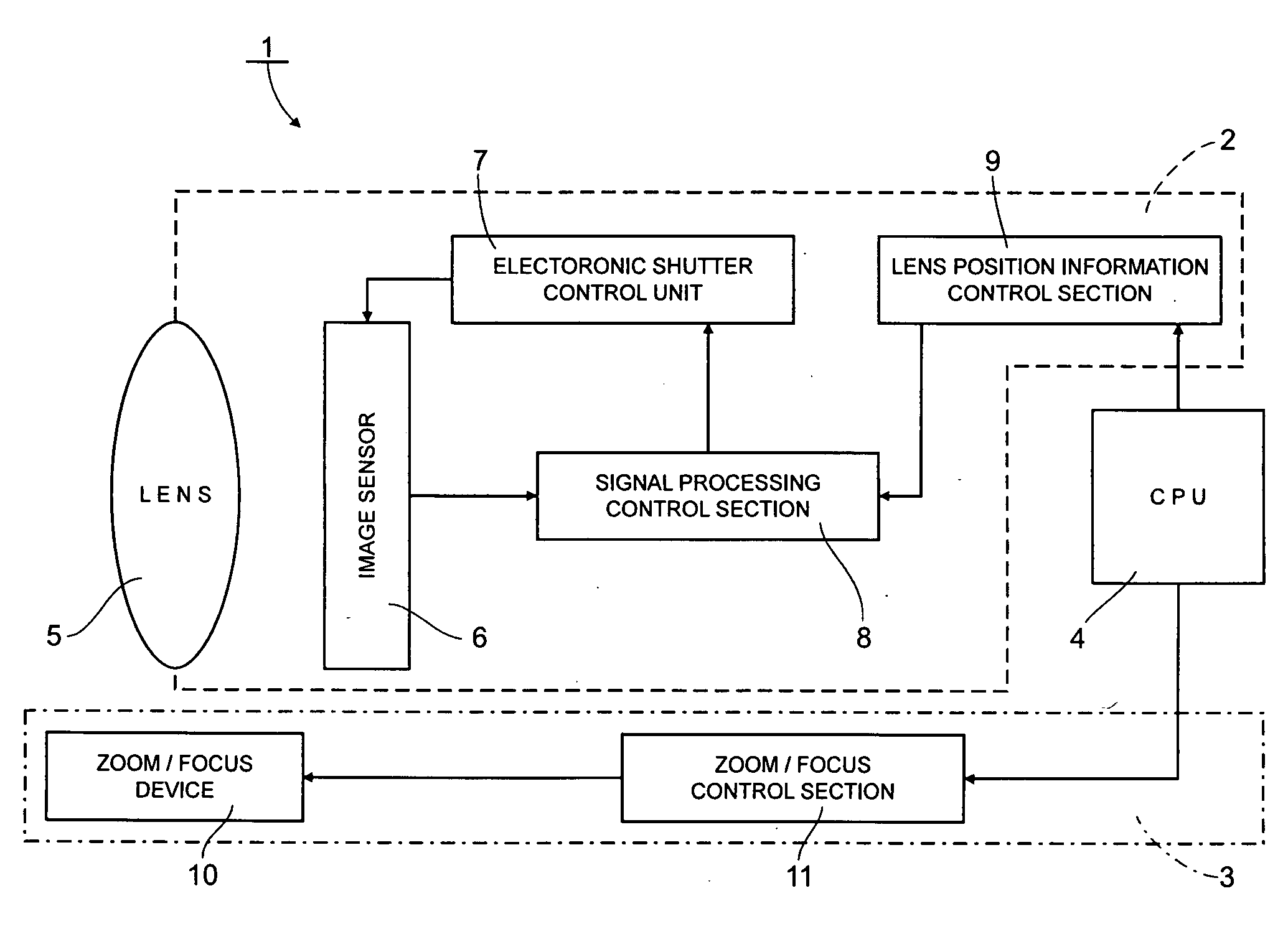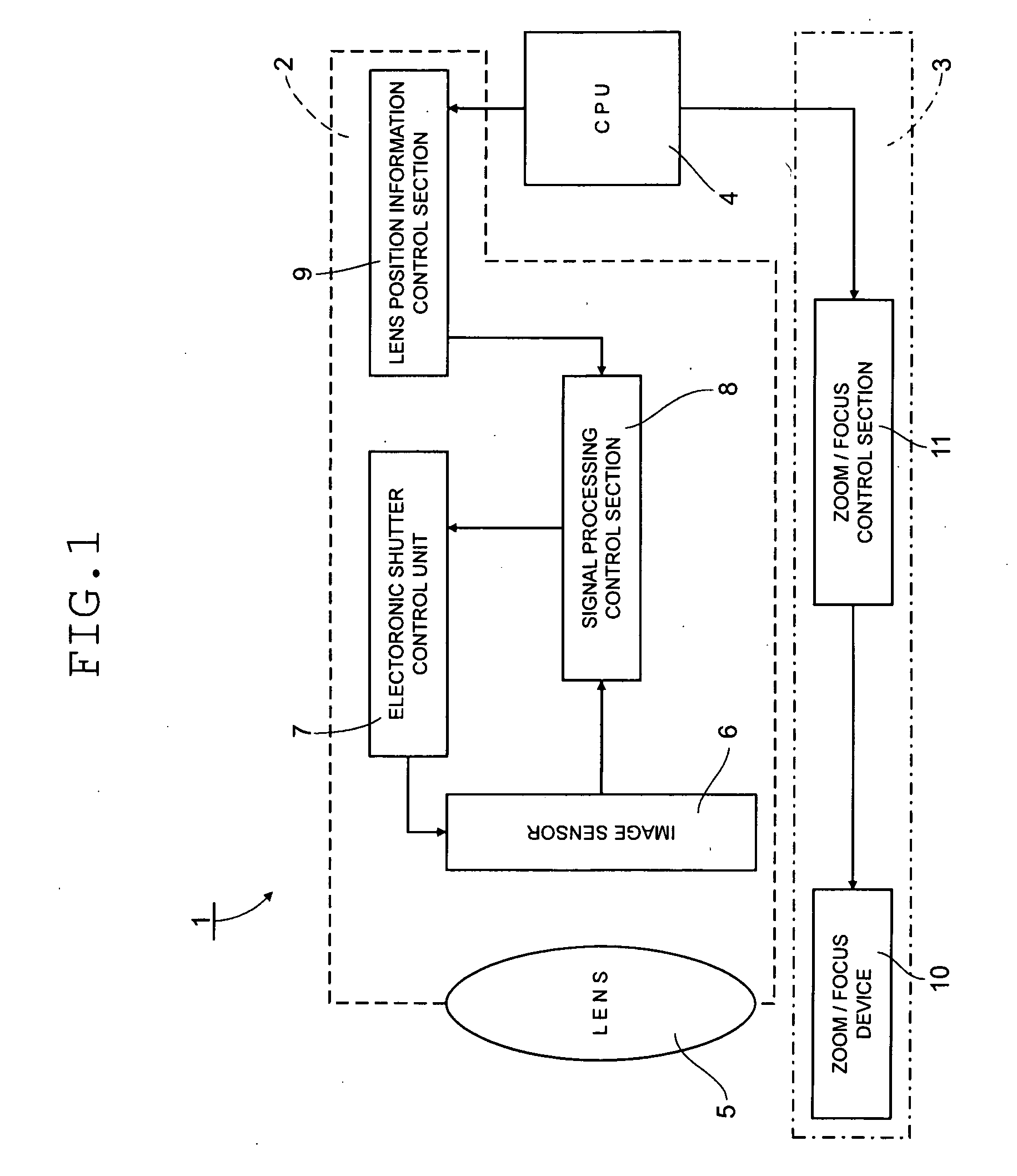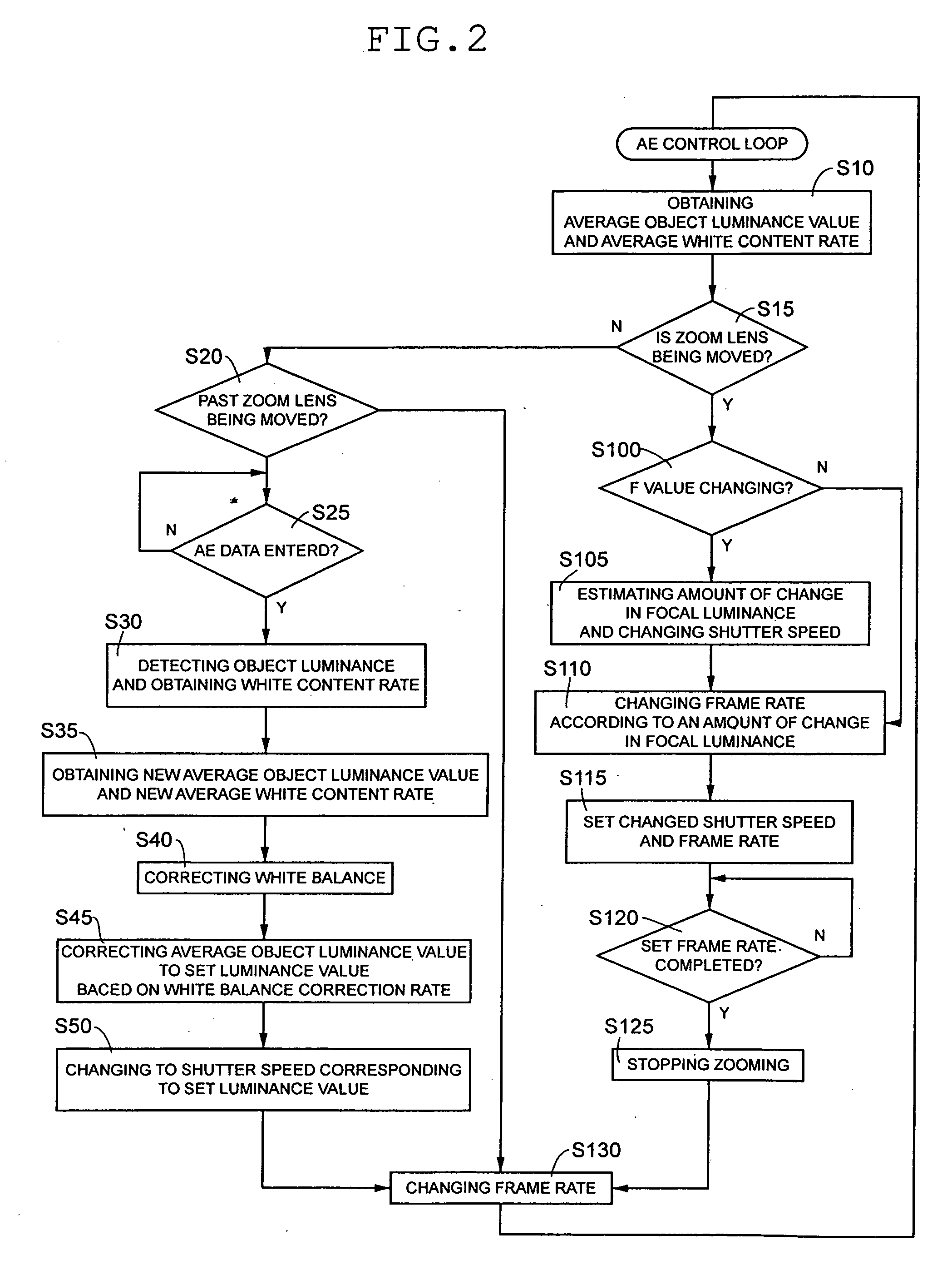Method of exposure control and image pickup apparatus
an exposure control and image technology, applied in the field of exposure control and image pickup devices, can solve the problems of excessive exposure, manual operation of the zoom lens, and the inability of the ae control to follow the zooming speed, so as to suppress the manufacturing cost of the image pickup apparatus and the amount of change in the focal luminance
- Summary
- Abstract
- Description
- Claims
- Application Information
AI Technical Summary
Benefits of technology
Problems solved by technology
Method used
Image
Examples
Embodiment Construction
[0031]An embodiment will be described with reference to the accompanying drawings. Referring to FIG. 1, an arrangement of an image pickup apparatus 1 of the embodiment is shown. The image pickup apparatus 1 comprises an image pickup section 2, an autofocus (AF) control section 3 and a central processing unit (CPU) 4. The image pickup section 2 comprises a lens group 5, an image sensor 6, an electronic shutter control section 7, a signal processing control section 8 and a lens position control section 9.
[0032]The lens group 5 comprises a plurality of lenses such as a zoom lens and a focus lens but is shown as a single lens for the sake of simplicity in FIG. 1. The image sensor 6 is made by arranging a solid-state image sensing device comprising a charge coupled device (CCD) into a lattice shape. The solid-state image sensing device is located on an imaging plane in the rear of the lens group 5. The electronic shutter control section 7 oscillates pulses for every predetermined period ...
PUM
 Login to View More
Login to View More Abstract
Description
Claims
Application Information
 Login to View More
Login to View More - R&D
- Intellectual Property
- Life Sciences
- Materials
- Tech Scout
- Unparalleled Data Quality
- Higher Quality Content
- 60% Fewer Hallucinations
Browse by: Latest US Patents, China's latest patents, Technical Efficacy Thesaurus, Application Domain, Technology Topic, Popular Technical Reports.
© 2025 PatSnap. All rights reserved.Legal|Privacy policy|Modern Slavery Act Transparency Statement|Sitemap|About US| Contact US: help@patsnap.com



